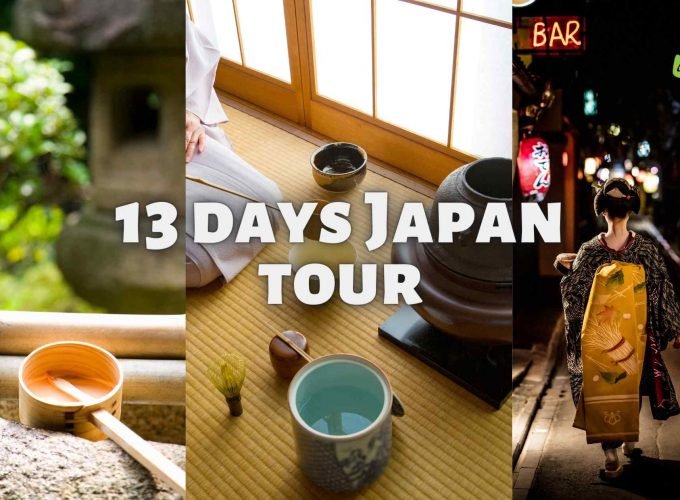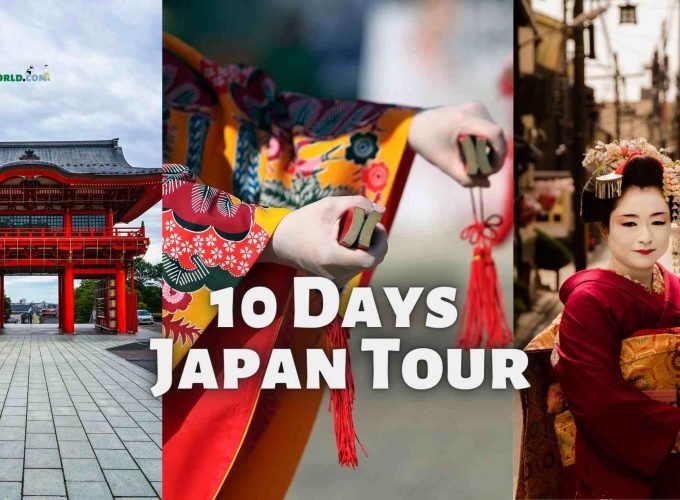About Itsukushima
Itsukushima, often referred to as Miyajima, is a little island that can be found in the bay of Hiroshima, Japan. It is well known for the Itsukushima Temple, which is a Shinto shrine devoted to the goddess of the sea and was believed to protect seamen. The Itsukushima Shrine is home to the famed floating torii gate, which is also part of the shrine. Along with Matsushima Bay and Amanohashidate, the shrine and the area immediately surrounding it have been included on the list of UNESCO World Heritage sites. Additionally, the shrine is regarded as one of Japan’s Three Views.
The Itsukushima Shrine is an outstanding architectural construction that consists of a number of structures and rooms connected by bridges and walkways that give the impression that they are floating on the ocean. The island is also well-known for its breathtaking natural landscape, which consists of forests, beaches, and breathtaking views of the islands that are in the vicinity.
Visitors to Itsukushima have a wide number of options available to them, including touring the shrine and its various buildings, going on hikes to discover the natural beauty of the island, and partaking in the cuisine and wares of the region as well as purchasing mementos. The island is also a well-known location for watching the dawn and sunset and for experiencing the tides, which can radically alter the appearance of the island as well as the shrine.
Itsukushima, as a whole, is an extraordinary and stunning location that provides visitors with a window into the history, culture, and spirituality of Japan as well as the opportunity to take in Japan’s breathtaking natural scenery.
History of Itsukushima
Itsukushima, also known as Miyajima, is an island located in Hiroshima Bay, Japan. Here is a timeline of its significant historical events:
Feudal period (1185-1868):
- 1185: The first shrine on Itsukushima is established by Taira no Kiyomori.
- 1555: The current Itsukushima Shrine is built by the feudal lord Miyamoto no Yorinobu.
- 1609: The island comes under the control of the powerful feudal lord Honda Tadatoki.
- 1637-1638: During the Edo period, Itsukushima becomes a center of maritime trade.
Meiji period (1868-1912):
- 1871: The shrine is officially designated as a “Special Place of Scenic Beauty.”
- 1887: The Meiji government declares Itsukushima as a national treasure.
World War II (1939-1945):
- 1945: The island and shrine suffer significant damage during air raids by the Allied forces.
Post-war period (1945-present):
- 1952: The Itsukushima Shrine is reconstructed and designated as a UNESCO World Heritage site in 1996.
- Today, Itsukushima is a popular tourist destination, known for its floating torii gate and scenic beauty.
This timeline provides a broad overview of the history of Itsukushima. If you have any specific questions, feel free to ask!
How to reach Itsukushima
Itsukushima, often referred to as Miyajima, is a Japanese island that can be found in the prefecture of Hiroshima. The following is a list of the steps needed to reach the island:
- Fly into Hiroshima Airport, as this is the airport that is geographically closest to Itsukushima. There are a number of places in Japan as well as cities outside of Japan from where you may fly to Hiroshima.
- Take the JR Sanyo Line to Miyajimaguchi Station: To get to Miyajimaguchi Station from Hiroshima Station, use the JR Sanyo Line, which will take roughly 30 minutes and will get you there.
- Take the ferry to Itsukushima: The trip to Itsukushima from Miyajimaguchi Station takes approximately ten minutes on the ferry. The ferry departs on a regular basis and continues to do so well into the nighttime hours.
You can also go to Itsukushima from other cities in Japan by taking the train or bus. This is another option. For instance, you can board the Shinkansen at Osaka Station, travel to Hiroshima Station, and then proceed with the methods outlined above.
As soon as you set foot on the island, you’ll be able to go on foot tours of the Itsukushima Shrine and the areas immediately surrounding it. If you would rather not use public transportation, you may also rent electric automobiles and bicycles instead.
Do's and Dont's at Itsukushima
Visiting Itsukushima, also known as Miyajima, is a unique and special experience, and there are some important do’s and don’ts to keep in mind to respect the cultural and religious significance of the island and its shrines. Here are some of the most important ones:
Do’s:
- Respect the shrine and its surroundings: The Itsukushima Shrine is a sacred site, so be sure to dress modestly, remove your shoes before entering the buildings, and be mindful of your actions and behavior.
- Enjoy the natural beauty of the island: Itsukushima is known for its beautiful forests, beaches, and scenic views, so take the time to explore the island and enjoy its natural wonders.
- Try local food and souvenirs: Itsukushima is famous for its oysters and other seafood, as well as its local sweets and souvenirs, so be sure to try some of the local specialties.
Don’ts:
- Litter: Keep the island clean and do not litter or leave any waste behind.
- Feed the deer: While the deer on Itsukushima are friendly and used to visitors, feeding them is not allowed as it can be harmful to their health.
- Climb on the floating torii gate: The floating torii gate is an iconic symbol of Itsukushima and a protected cultural heritage site, so do not climb on it or touch it.
By following these guidelines, you can ensure that your visit to Itsukushima is respectful, enjoyable, and memorable.
Highlights of Itsukushima
Itsukushima, also known as Miyajima, is a small island located in Hiroshima Bay, Japan, that offers a unique combination of cultural, historical, and natural attractions. Here are some of the highlights of a visit to Itsukushima:
- Itsukushima Shrine: The main attraction on the island, the Itsukushima Shrine is a beautiful and unique Shinto shrine that seems to float on the water. The shrine is composed of several buildings connected by bridges and walkways, and is famous for its iconic floating torii gate. Visitors can explore the shrine and its many buildings, as well as take in the beautiful views of the surrounding bay.
- Floating Torii Gate: The floating torii gate is the iconic symbol of Itsukushima and is one of the most famous sights in Japan. It is a massive red gate that seems to float on the water at high tide, and is a popular spot for photography and sightseeing.
- Natural Beauty: Itsukushima is known for its beautiful natural scenery, including forests, beaches, and scenic views of the surrounding islands. Visitors can take a hike, go on a scenic walk, or simply relax and enjoy the scenery.
- Local Food and Souvenirs: Itsukushima is famous for its oysters and other seafood, as well as its local sweets and souvenirs. Be sure to try some of the local specialties while you’re on the island.
- Wildlife: It is home to a population of friendly deer that are used to visitors and often approach them. Spotting the deer and taking photos with them is a fun and memorable experience.
- Tides: It is famous for its dramatic tides, which can change the appearance of the island and the shrine dramatically. The island is a popular spot for viewing the sunrise and sunset and experiencing the tides.
These are just some of the highlights of a visit to Itsukushima. Whether you’re interested in history, culture, or nature, there is something for everyone on this beautiful and unique island.






Comment (0)